Browning Citori Hunter GradeII 16 Gauge 26" Break Action Shotgun – 18259514 For Sale
$2,025.99
The Browning Citori Hunter Grade II 16 Gauge 26″ Break Action Shotgun, model 18259514, is an exceptional choice for hunting enthusiasts, embodying the esteemed Citori tradition known for durability and outstanding handling. Designed for the field, this over and under shotgun ensures reliable performance without compromising quality. It features a robust Grade II/III walnut stock with a smooth satin finish, exuding elegance and functional performance. For enhanced shooting comfort, it includes a premium Inflex recoil pad. The nickel-plated receiver, complemented by the blued finish of the barrels, is elegantly accented with gold detailing, showcasing Browning’s superior craftsmanship. This firearm seamlessly combines style, comfort, and performance to elevate your hunting experience.
What is the difference between Browning Citori grade 1 and grade 2?
The Browning Citori Grade 1 and Grade 2 differ primarily in terms of aesthetics and finish. Here are the main differences:
1. **Wood Quality**:
– **Grade 1** typically features a standard walnut stock with less figure in the wood.
– **Grade 2** generally has a higher-grade walnut with more figure and grain pattern, offering a more visually appealing appearance.
2. **Engraving and Receiver Finish**:
– **Grade 1** often has simpler, more basic engraving or may appear with little to no embellishment on the receiver.
– **Grade 2** usually includes more elaborate engraving or embellishment, lending the firearm a more decorative and upscale look.
3. **Checkering**:
– The level of detail and craftsmanship in the checkering on the stock may be more refined in Grade 2 compared to Grade 1.
Functionally, both grades are similar and maintain the same operational performance and reliability. The differences are mainly in the elements that contribute to the firearm’s visual appeal and cost, with Grade 2 being a more upscale version.
What are the grade levels of Browning Citori?
The Browning Citori shotgun is available in several grade levels, which reflect differences in design, embellishments, and materials. Common grade levels include:
1. **Standard Grade**: Basic model with standard wood and minimal engraving.
2. **Grade I**: Higher quality wood and simple engraving.
3. **Grade II**: Better wood grade with more detailed engraving.
4. **Grade III/IV**: Even higher quality wood and extensive engraved patterns.
5. **Grade VI/VII**: Premium wood and intricate engraving, sometimes with gold inlays.
Special editions and custom configurations may have additional grade designations.
Is the Browning Citori Hunter a good gun?
The Browning Citori Hunter is generally regarded as a good shotgun, known for its reliability, quality craftsmanship, and aesthetics. It’s a popular choice for both hunting and sport shooting due to its durable construction, balanced handling, and the smooth operation characteristic of Browning firearms. However, whether it’s a “good” gun can depend on individual preferences, needs, and budget, as the Citori is often considered a higher-end option.
Is the Browning Citori worth the money?
Whether the Browning Citori is worth the money depends on your needs and preferences. The Citori is a well-regarded over-under shotgun known for its quality, durability, and craftsmanship. It’s favored by many hunters and sport shooters. If you’re looking for a reliable, well-made shotgun that can last for many years, it could be a good investment. However, it might be expensive if you’re a casual shooter or just starting out. Consider your budget, usage, and whether the features align with your shooting activities to determine if it’s worth it for you.
What is the difference between Citori and Citori 725?
The Citori and Citori 725 are both series of over-and-under shotguns made by Browning. The main differences between them lie in design features, technology, and overall handling:
1. **Action Mechanism**:
– The Citori 725 features a low-profile receiver which tends to improve the gun’s balance and aim. It’s built around a mechanical trigger system rather than the inertia system found in older Citori models, offering more reliable firing for successive shots without relying on recoil.
2. **Trigger**:
– The Citori 725’s mechanical trigger system provides a lighter and crisper pull compared to the inertia trigger system in the standard Citori models.
3. **Barrel Design**:
– The Citori 725 incorporates Browning’s Vector Pro lengthened forcing cones and Back-Bored technology, which improve shot patterns and reduce recoil.
4. **Recoil Management**:
– The Citori 725 models often come with Inflex Technology recoil pads that are designed to reduce the felt recoil and improve shooting comfort.
5. **Ergonomics and Weight**:
– The Citori 725 is generally designed to be a bit lighter and has slightly different ergonomics, which could affect how it feels when shouldered and swung.
6. **Price Point**:
– Due to the enhanced features and modern design, the Citori 725 is usually at a higher price point compared to the traditional Citori models.
These differences make the Citori 725 more tailored for competitive shooting and those who prioritize modern shotgun technology, while the traditional Citori models are often preferred by those who appreciate classic build and design.
How much does a browning citori cost?
The price of a Browning Citori can vary widely depending on the specific model, condition, and any custom features it may have. As of recent information, new Browning Citori shotguns typically range from around $1,800 to over $4,000. Used models may be available for less, depending on their condition. For the most accurate and up-to-date pricing, it’s best to check with authorized dealers or online firearm retailers.
How long will a Browning Citori last?
The longevity of a Browning Citori shotgun largely depends on how well it is maintained and how frequently it is used. With proper care, regular cleaning, and maintenance, a Browning Citori can last for decades, often serving multiple generations. Many owners report these shotguns functioning reliably after tens of thousands of rounds. Proper storage and routine inspections for wear and tear can significantly extend its lifespan.
Are all Browning Citori made in Japan?
Yes, all Browning Citori shotguns are made in Japan by Miroku Corp.
What are the different grades of Browning shotguns?
Browning shotguns come in several different grades, each distinguishing itself in terms of materials, craftsmanship, finishes, and embellishments. Here are some of the commonly recognized grades:
1. **Field Grade** – These are typically the basic models designed for utility and reliability in hunting and shooting sports.
2. **Hunter Grade** – Often similar to field grades, these may have additional features for hunters, such as particular stock designs or finishes.
3. **Sporting Grade** – Tailored for clay shooting sports, these shotguns might have features that enhance performance in sporting scenarios, like reduced recoil or improved balance.
4. **High Grade/Deluxe Grade** – These models feature superior craftsmanship, often with high-quality wood stocks, detailed engravings, and additional cosmetic enhancements.
5. **Custom and Special Editions** – These can include unique, limited-run shotguns created for collectors, featuring custom engravings, inlays, and premium materials.
Specific models, such as the Browning Citori, Browning A5, or Browning Maxus, might offer their own range of grades and specifications depending on the year and market focus.
Where is the Browning Citori Hunter made?
The Browning Citori Hunter is made in Miroku, Japan.
Who makes the best shotgun for hunting?
The “best” shotgun for hunting often depends on personal preference, the type of hunting, and individual needs. However, several brands are consistently regarded highly for their quality, reliability, and performance:
1. **Benelli** – Known for their innovative semi-automatic shotguns, such as the Benelli Super Black Eagle series, which are favored for their reliability and cutting-edge technology.
2. **Beretta** – Offers a range of shotguns that are praised for their craftsmanship and versatility, like the Beretta A400 series.
3. **Browning** – With a long history of producing durable and high-performance shotguns, the Browning Citori and Browning Maxus models are popular choices.
4. **Remington** – The Remington 870 is one of the best-selling shotguns of all time and is known for its rugged reliability.
5. **Winchester** – Offers solid and reliable options like the Winchester SX4, appreciated for its performance and affordability.
Each brand and model has its own strengths, so it’s important for hunters to consider their specific needs, including the type of game, hunting environment, and personal preferences, when selecting a shotgun.
Does Browning Citori have ejectors?
Yes, the Browning Citori features ejectors. The ejectors automatically expel spent shells from the shotgun when the action is opened, making it ready for reloading.
What is the difference between Type 1 and Type 2 Browning bars?
The main differences between Type 1 and Type 2 Browning BAR (Browning Automatic Rifle) models typically involve design and manufacturing modifications that occurred over different production periods. Here are some key distinctions:
1. **Manufacturing Period**:
– **Type 1**: Produced primarily during the late 1960s and early 1970s.
– **Type 2**: Introduced around the late 1970s and into the 1980s.
2. **Receiver Design**:
– **Type 1**: Features a steel receiver, which is often associated with a more classic look and higher weight.
– **Type 2**: Transitioned to an aluminum alloy receiver, reducing the overall weight of the rifle.
3. **Production Locations**:
– **Type 1**: Manufactured in Belgium by FN Herstal.
– **Type 2**: Initially produced as a joint venture between the FN factory in Belgium and Browning’s operations in Portugal or Japan (Miroku).
4. **Stock and Features**:
– Important changes to the stock design, checkering, and sometimes the inclusion of additional features or refinements in the Type 2 models. This includes different stock finishes, sling swivel modifications, and other ergonomic improvements.
5. **Mechanics/Internal Changes**:
– Various subtle changes in the internal components and the gas operation system may exist as manufacturers worked on improving performance, reliability, and ease of maintenance.
These distinctions might vary slightly based on specific models or limited production runs, so always refer to precise manufacturer details or collector resources for the Browning BAR for the most definitive comparisons.
What are the different grades of Browning shotguns?
Browning shotguns are available in several grades, each reflecting different levels of craftsmanship, materials, and aesthetics. The exact grades can vary depending on the specific model and the historical period, but common grade distinctions include:
1. **Grade I (Standard Grade):** This is the most basic level, offering standard finishes and wood quality. It is typically the entry-level option with functional design and materials.
2. **Grade II & III:** These grades often feature better wood quality, enhanced engraving, and more detailed finishes compared to Grade I.
3. **Grade IV & V (High Grades):** At these levels, shotguns usually showcase premium wood, intricate engravings, and sometimes gold inlays. These grades are more ornate and are aimed at collectors or those who value aesthetic enhancements.
4. **Deluxe and Custom Grades:** These grades include the highest level of craftsmanship, often featuring hand-engraved designs, very high-grade wood, and custom options tailored to the owner’s specifications.
5. **Limited or Special Editions:** These might not be an official grade but often represent unique or commemorative models with special features, finishes, or markings.
The availability and specific characteristics of each grade can vary widely based on the shotgun model (e.g., Citori, BPS) and the production year, as Browning often updates and changes offerings over time.
What does Browning Citori mean?
The Browning Citori is a line of over-and-under double-barreled shotguns manufactured by the Browning Arms Company. The Citori line is known for its quality craftsmanship, reliability, and performance. These shotguns are often used by sports shooters and hunters due to their balance, durability, and the variety of gauges and configurations available. The Citori models are appreciated for their elegant wood stocks, smooth operating mechanics, and overall high-quality build.
Be the first to review “Browning Citori Hunter GradeII 16 Gauge 26" Break Action Shotgun – 18259514” Cancel reply
Related products
Browning Citori Hunter Grade II
Browning Citori Hunter Grade II
Browning Citori Hunter Grade II
Browning Citori Hunter GradeII 28 Gauge 28" Break Action Shotgun – 18259813
Browning Citori Hunter Grade II
Browning Citori Hunter Grade II Walnut 26" Over Under .410 Shotgun, Blued – 018259914
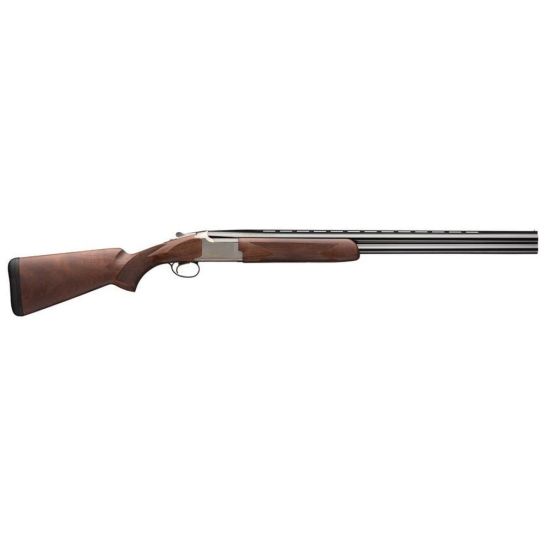
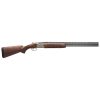
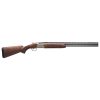
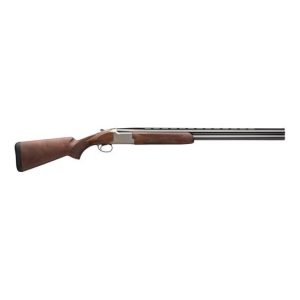
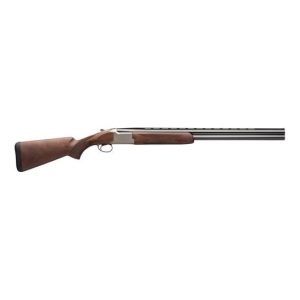
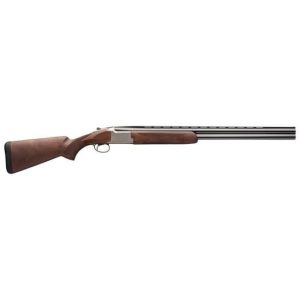
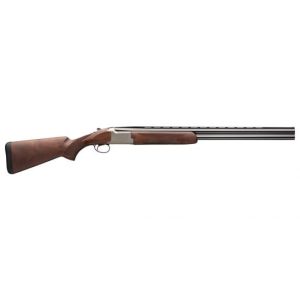
Reviews
There are no reviews yet.